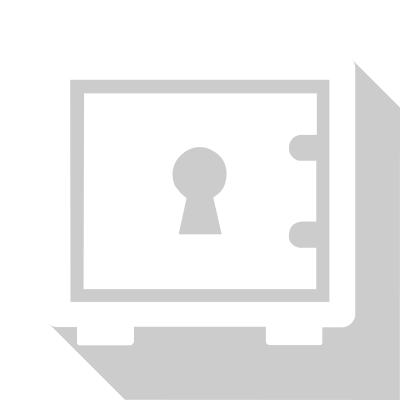
Belongings
Whilst concentrating on preventing criminals from gaining access to your home should be your first priority, you should also put up as many hurdles as you can to either put off theft or to make it easier to have your property returned.
This is why documenting the important items in your home and marking them in some way can help a lot.
Not only will it assist the police in returning items but in the case of flood, fire, etc your insurance company can use it to assist your claims.
Marking Your Property

Marking your property in some sort of way can be one of the best ways to secure, and be reunited with your possessions in the event that they are stolen.
There are various methods to mark your items and these, in conjunction with documentation, can be the best way to assist the police in returning your items as well as convicting those in possession of them.
Traceable Liquids
Traceable liquid technology marks items of value with their own unique forensic "code" which is almost impossible to remove.
Any traces of the liquid will glow bright yellow under ultraviolet light, allowing Police officers to easily identify any marked property.
Additionally, these unique marking technologies help ensure that any recovered items are swiftly returned to you.
There are various companies and technologies available but the two main systems employed are generally microdots and DNA (or a variation thereof), both are essentially invisible to the naked eye which is why they normally provide stickers to warn thief's that the items are tagged and to hopefully prevent theft in the first place.
Microdots
Microdots can be applied to just about any surface, thus making it virtually impossible for the criminals to locate and remove them all.
They are tiny circles that have a unique code printed all over them that the police can view under a microscope to identify the owners.
DNA Liquids
These are a unique chemical DNA solution which you can simply dab on various items ideally in a discreet and uneven surface to provide a virtually impossible to remove tag.
Like microdots, they can be applied to just about any surface and is best applied in various locations per item.
Some popular systems come from Smartwater, datatag and alphadot.
Ultra Violet Marking
Marking equipment can also be done by using a simple UV pen which can cost as little as £1 or you can get full kits which may include a UV light, pens and stickers from about £5.
UV pen markings are not visible to the naked eye unless you can catch the light just right, and therefore do not act as such a big visual deterrent.
You can add stickers that will inform people that the item is tagged to hopefully deter them from stealing your item.
Normally you would write in a discrete place either your postcode and house number or first three letters of house name on the item of property.
Direct sunlight or heat generated by electrical equipment like computers can make markings fade over time so you should re-apply markings on a regular basis.
Documenting & Registering Your Property
Keeping records of your expensive or sentimental items is a great way to help the police in returning your stolen items back to you.
The police quite often will recover stolen goods but are unable to reunite them with their proper owners and so have to auction them off.
The obvious thing to do in the case of electrical devices is to write down their serial numbers (or other unique markings).
Even better would be to use one or more of the solutions previously mentioned - especially for jewellery, antiques and paintings which you do not want a visible mark on.
This documentation can be vastly improved with a simple photo of your items - this is a quick, low-cost way to identify your items. A good tip is to take shots from various angles, make sure any unique features or marks/defects are viewable and to photograph them next to a ruler to give scale.
You could use the immobilise website which is a free register of possession ownership to store your details. All your registered items and ownership details are instantly viewable on the Police national property database the NMPR.
Immobilise is the only ownership registration service supported by all UK Police forces, the Greater London Authority, and the Mobile Phone Industry.
Safes

Most conventional home safes are generally small in size so it is especially important to install it in a well-hidden location.
Thieves quite often will try to remove a safe to take with them so that they can spend time opening it at their leisure.
They can normally be fixed to a floor or wall but you must make sure they are strictly installed according to their instructions as they have to be attached securely to make sure that they cannot be easily kicked or pried out.
Do not freely mention in public or online that you have a safe at home as this can give the impression that you have a lot of valuables sitting around.
What type of Safe?
In order to decide what safe is right for your home, you need to first decide what you want to store in the safe.
Each safe is designed for a certain purpose, some are flood proof, others have a fire rating generally by minutes or temperature and others are designed for laptops and other electrical equipment.
They can have a key, fingerprint, mechanical or digital PIN code keypad access but most will have a fall back to a physical key in case of power failure.
Safes that require power for their operation will generally have a battery compartment inside the unit which will require periodic replacement.
Their prices can vary wildly depending on size or what features and ratings they have but you can get basic units for about £20.
Key Storage
Keys, in particular, can be a prime target for thieves as they can easily steal your vehicles whilst in the process of burgling your home - especially if you do not make an effort to hide them from casual view.
One of the best places to store keys is therefore in a securely installed safe.
Pets

Alarms
If you have a pet you should make sure that your homes burglar alarms motion sensors and cameras can tell the difference between pets and intruders so that you don't get false alarms.
Bigger dogs may still trigger your alarm and so will birds if they fly too close but this isn't a problem for smaller pets.
Microchipping
If your pet runs off, is lost or stolen then microchipping is the best way to ensure that they can easily be returned to you.
It is a quick and simple process to insert a tiny microchip under the animal's skin to give your pet a unique scannable code.
Many pets can be microchipped including cats, dogs, rabbits and horses.
For suitability, you should check with your vet for advice, as it will depend on the species, size and condition of your animal.
However, it is now a legal requirement to have your dog over 8 weeks old wear a collar, be chipped and also to keep your details up-to-date.
If you need additional information on this and any other pet care, you can visit the RSPCA website.
- Don't leave dogs unattended in the street
- Don't leave them alone in a car - particularly in warm weather
- Ensure you pick up and dispose of faeces responsibly
- Make sure your property, kennels and garden is secure and don't leave them alone for long periods of time
- Ensure your dog is fully trained to come back to you before you let it off the lead
- Always keep them on a lead when walking near roads
- Don't let them off their lead when near children's play areas
- Don't allow them to run free near farm animals
- Don't let them become a nuisance or danger to other people or animals

